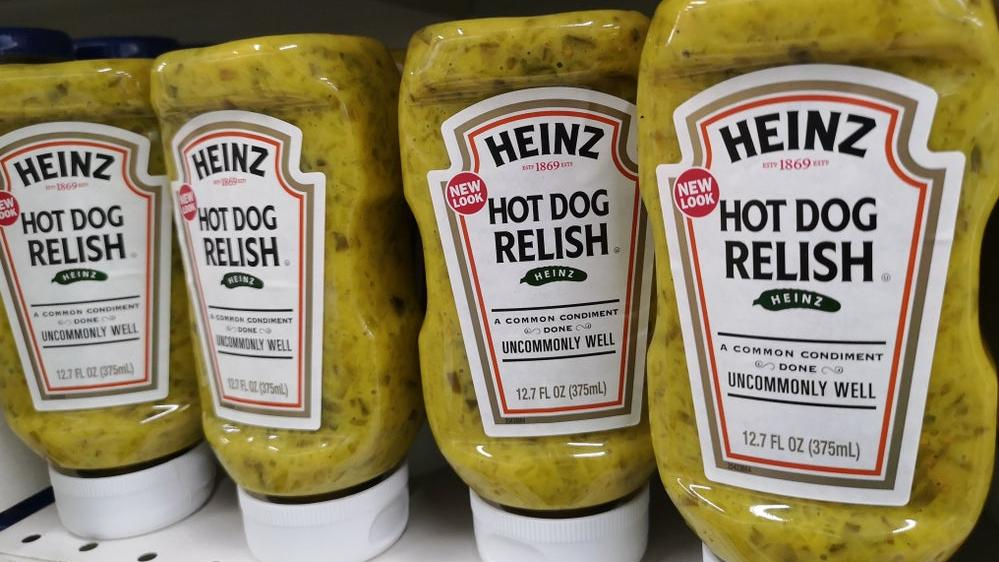What Is Relish, Other Than A Hot Dog's Best Condiment?
Is relish just chopped-up pickles? And what’s cabbage got to do with it?
Let's get something out of the way up top: I love sweet relish. I relish relish. I think it's a perfect thing to put on top of hot dogs. But I recently realized I've never thought much about what relish actually is. Maybe you haven't, either. Let's figure this out before our next hot dog.
Technically, besides its definition of "to be pleased or gratified by," the word "relish" can refer to any addition of "zestful flavor." Salsa can therefore be called a relish, as can many other things. But here, when I talk about "relish," I'm talking about the sweet pickly stuff you put on top of hot dogs.
And if you asked me, a week ago, "What is relish?" I'd have said just that: "The sweet pickly stuff you put on top of hot dogs." I know dill relish is also popular, but the sweet version is my go-to. I have, of course, also noticed the little flecks of dehydrated red pepper in it, but the overwhelming ingredient is the pickles. Thus, "pickly stuff." Period. But as I've learned whilst exploring the question, it's not quite as simple as "relish = chopped-up pickles." There are some ingredients you might not expect.
The American (and global) roots of relish
In this detailed blog post on the origins of relish, food blogger Dann Woellert (of Dann Woellert the Food Etymologist) takes a deep dive into the history of Heinz. Which seems appropriate, because when I picture relish, the Heinz packaging comes to mind first. There's not a whole lot about relish in Heinz's own "complete history" at its website: there's a bit on pickles and sauces, but mostly it's a whole lot of tomato talk. Woellert, however, visited the home of H.J. Heinz in Sharpsburg, Pennsylvania, and came away with a lot of knowledge about the stuff; turns out it's got a lot more depth than just chopped-up pickles.
Woellert reports that Heinz debuted Piccalilli, a sour-pickle relish, in 1888, a product that remains popular in the UK. It was well-received, says Woellert, but not as popular as Heinz's next relish, which was introduced in 1889: India relish. This is where relish starts to more closely resemble the sweet stuff I like to pile onto my hot dogs today (the second ingredient on the list in both India relish and my preferred version is high fructose corn syrup). As Woellert details, Heinz's inspiration for India relish was actually Indian chutneys.
"I think of the three chutneys that most Indian restaurants in America serve with their deep fried samosa appetizers – the spicy chili and onion chutney, the cooling mint /coriander chutney, and the sweet and savory brown chutney," writes Woellert. "Each has much deeper flavor than our bland pickle relishes." And with its India relish, Heinz brought some of that depth to pickle relishes in America.
Several of Woellert's descriptions mentioned both cabbage and spices, which inspired me to examine Heinz's full line of currently available relish offerings. To my surprise, Heinz's relishes—including dill, sweet, "hot dog," and India varieties—all contain cabbage. And "hot dog relish," whose yellow appearance I always just attributed to a mixture of relish and mustard, is heavy on turmeric. Who knew?
Wait, so does all relish contain cabbage?
No, not all relish has cabbage in it, though it appears all of Heinz's relishes do. I checked the generic brand of sweet relish at my local grocery store and found none on the ingredient list. The house brand really is just a bunch of chopped-up pickles, albeit with some chopped-up red pepper in there, too.
There are also plenty of small-batch and bespoke pickle relishes on the market. Woodstock organic sweet relish does not contain cabbage, just pickles and dehydrated peppers (among sweeteners and other flavor elements). Nor does Bubbies dill relish (Bubbies also makes a delightful bread and butter pickle, which is a good stand-in for sweet relish if you're in a pinch). McClure's relishes, which come in garlic and spicy varieties, don't contain cabbage either.
So, Heinz, what's with the cabbage? It's evidently for texture more than anything else, and I'm sure I'm not the only one who hardly even realized it was there. Heinz relish does have a mysteriously homogenous, goopy quality that other relishes don't, especially ones from small pickle purveyors like the ones mentioned above. Is it good? Is it bad? Is it magic? Whatever it is, it's still my go-to, my platonic ideal of relish. And anyone for whom Heinz ketchup reigns supreme will probably understand this.
